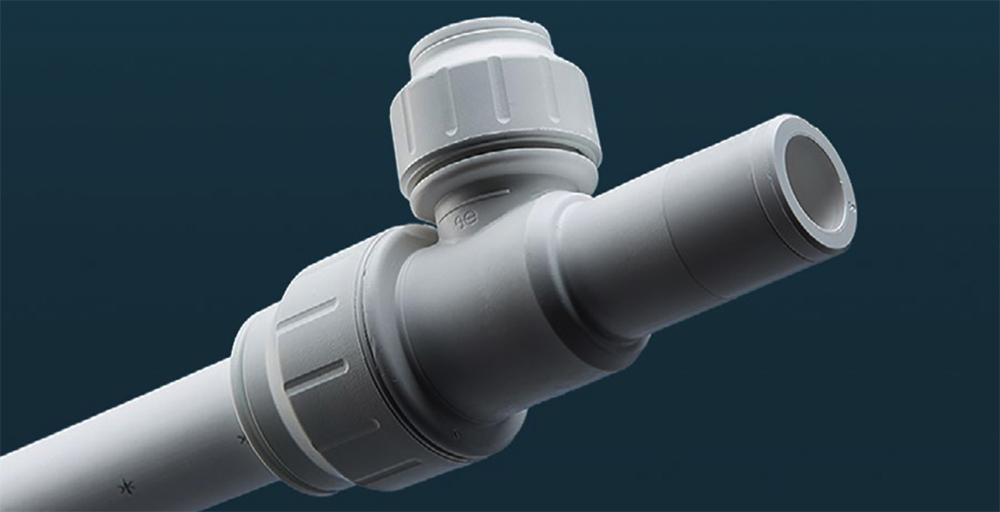Specifying efficient water systems for residential new build developments
Contents |
[edit] Conserving a precious natural resource
Water is our most precious natural resource, which is why sustainable water practices should be at the forefront of every building design project. With recent global crises highlighting how fleeting our water supply is, this article looks at how modern technologies from RWC can make for more water efficient residential new build developments.
Most parts of the UK experienced severe droughts in recent summers, and a country that is usually proud of its lush green hills was left bare and burnt. Preserving water as best we can is one effort that the entire country is having to make to ensure that livestock and local food produce can continue to be grown at home.
So, what can individuals in the UK do to help conserve water and use our natural resources more efficiently? One obvious answer lies in our plumbing and heating systems. With leaky water pipes and poor water usage across the UK wasting enough water to fill 1,262 Olympic-sized swimming pools every day, specifying best practice water systems is key to preserving this precious resource.
This is why manufacturers like RWC are continuing their efforts to create innovative products and offer solutions, so that the existing stack of water inefficient buildings are not added too. Solutions such as the JG Speedfit and Reliance Valves ranges ensure specifiers have the best tools at their disposal to design water- preserving systems.
[edit] Preserving water from the start
Three billion litres of water are lost to leaks every day in the UK, in fact, a single leak can lose up to 1400 litres in 24 days. Not only are these leaks environmentally damaging but escaped water can be equally damaging to a building’s structure.
Of course, fixing existing leaks is always priority number one, but designing plumbing systems so that they do not occur in the first place should be the goal that specifiers and designers set out to achieve. While there is never a 100% chance of preventing leaks, using a system with a reduced number of joints, or with an easier installation can reduce the chances of leaks happening as much as possible.
Plastic push-fit fittings, such as those in the JG Speedfit range, are entirely flame- and tool-free, which reduces any issues that can arise from soldering. The plastic fittings feature a collet with stainless steel teeth and an O-Ring inside each fitting, which grabs on to the pipe and creates a tight, waterproof seal, this design reduces installation errors and the chances of leaks from occurring from the start.
[edit] Controlling water flow at point of use
In addition to leaks, one of the leading causes of water wastage in residential commercial buildings is poor pressure control and, in turn, valve failure. Therefore, pressure control valves, such as pressure reducing valves (PRV), should be a key consideration when it comes to specifying a new building’s plumbing system.
However, with designers opting for taller buildings to reduce urban sprawl, space is becoming a premium, especially in plumbing cupboards. And so, whilst the UK building regulations give recommendations for a building’s maximum flow rates, installing the required infrastructure to achieve them, is becoming a more difficult task.
The specification of the right pressure controlling valves, can speed up construction processes, too. For example, tool-free and space saving solutions, such as the 312 Compact Series PRV from Reliance Valves, lead to a much easier installation and ensures that the system is controlled and protected.
The valve is equipped with JG Speedfit’s push-fit connections, meaning that installing the valve can
be done without the need for tools. Similarly, with all the working components being contained within one cartridge, the valve can be quickly and easily serviced.
[edit] Fewer joints, fewer chances of leaks
For multi-occupancy buildings, not only is water being used at a much higher rate, but it is being demanded from more outlets, too. As with any building, specifiers must consider the intricacies of the products and technologies they are introducing into the building, ensuring that they are easy to install, maintain, and repair. However, with multi-occupancy buildings requiring a larger amount
of infrastructure, due to the demands of each resident, space is again a frugal asset.
Each individual residence is required by water regulations to have an isolating valve (stop valve) and a double check valve fitted at the entrance to the property. It is common at the same time to fit a water meter, and a pressure reducing valve, in the same space, to create an optimal plumbing system.
The installation of four valves per flat or apartment requires a lot of time and space, and because there are so many connections to be made, there is a greater risk that one will be made improperly, leading to unwanted leakage. By considering a combination valve instead of a chain of four different valves, specifiers will not only be saving space in the cupboard, but they will also enable faster installation times, while reducing leak potential, which can save tons of precious water.
Reliance Valves’ Tenant Valve Plus brings together five functions into a singular self-contained unit that can control and monitor water supply in multi-occupancy buildings. It incorporates a composite, scale resistant ball type isolating valve, which is also WRAS approved as a stop valve, a pressure reducing valve, double check valve, a patented dual reading pressure gauge, and a connection point for the optional addition of either a primary or secondary water meter.
[edit] Specifying efficient water systems
With water becoming an ever more stringent resource, efficient usage and preventive measures are key to supporting our combined efforts to preserve as much water as possible, at every point of use. By specifying best practice water systems in our buildings, we are one step closer to stopping water wastage.
For further information please visit https://www.reliancevalves.com/gb/en/about
This article appears in the AT Journal Summer issue number 146, 2023 as "Specifying efficient water systems for residential new build developments" written by Eric Winter, EMEA Director of Product Development, RWC.
--CIAT
[edit] Related articles on Designing Buildings
- Delivering water efficiency in commercial buildings: A guide for facilities managers.
- Passive water efficiency measures.
- Rainwater harvesting.
- Sustainable urban drainage systems.
- The State of the Environment: Water Resources.
- Water consumption.
- Water efficiency – The next big sustainability issue?.
- Water-use efficiency.
- Why innovation is needed in the water sector.
Featured articles and news
RTPI leader to become new CIOB Chief Executive Officer
Dr Victoria Hills MRTPI, FICE to take over after Caroline Gumble’s departure.
Social and affordable housing, a long term plan for delivery
The “Delivering a Decade of Renewal for Social and Affordable Housing” strategy sets out future path.
A change to adoptive architecture
Effects of global weather warming on architectural detailing, material choice and human interaction.
The proposed publicly owned and backed subsidiary of Homes England, to facilitate new homes.
How big is the problem and what can we do to mitigate the effects?
Overheating guidance and tools for building designers
A number of cool guides to help with the heat.
The UK's Modern Industrial Strategy: A 10 year plan
Previous consultation criticism, current key elements and general support with some persisting reservations.
Building Safety Regulator reforms
New roles, new staff and a new fast track service pave the way for a single construction regulator.
Architectural Technologist CPDs and Communications
CIAT CPD… and how you can do it!
Cooling centres and cool spaces
Managing extreme heat in cities by directing the public to places for heat stress relief and water sources.
Winter gardens: A brief history and warm variations
Extending the season with glass in different forms and terms.
Restoring Great Yarmouth's Winter Gardens
Transforming one of the least sustainable constructions imaginable.
Construction Skills Mission Board launch sector drive
Newly formed government and industry collaboration set strategy for recruiting an additional 100,000 construction workers a year.
New Architects Code comes into effect in September 2025
ARB Architects Code of Conduct and Practice available with ongoing consultation regarding guidance.
Welsh Skills Body (Medr) launches ambitious plan
The new skills body brings together funding and regulation of tertiary education and research for the devolved nation.
Paul Gandy FCIOB announced as next CIOB President
Former Tilbury Douglas CEO takes helm.
UK Infrastructure: A 10 Year Strategy. In brief with reactions
With the National Infrastructure and Service Transformation Authority (NISTA).


























